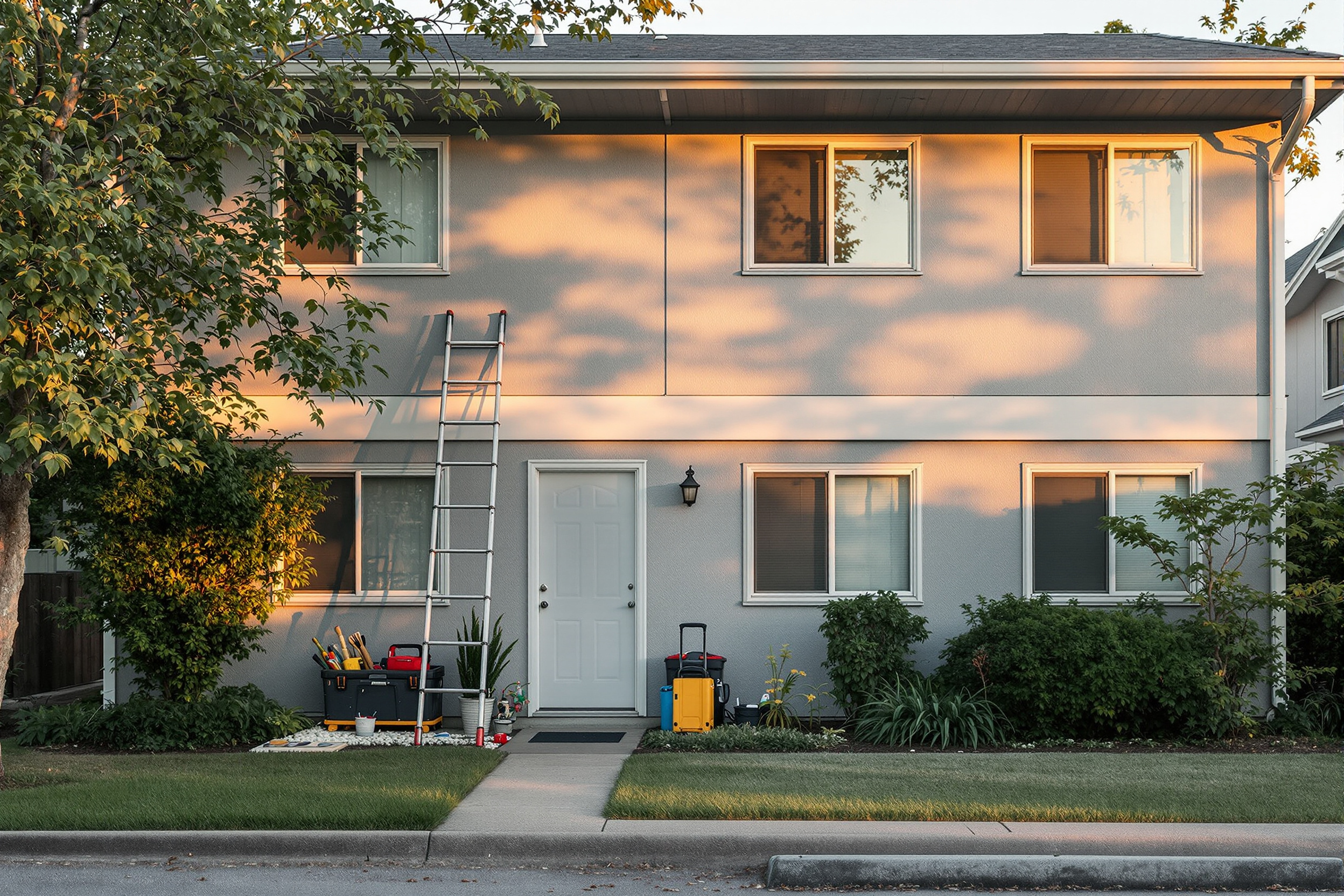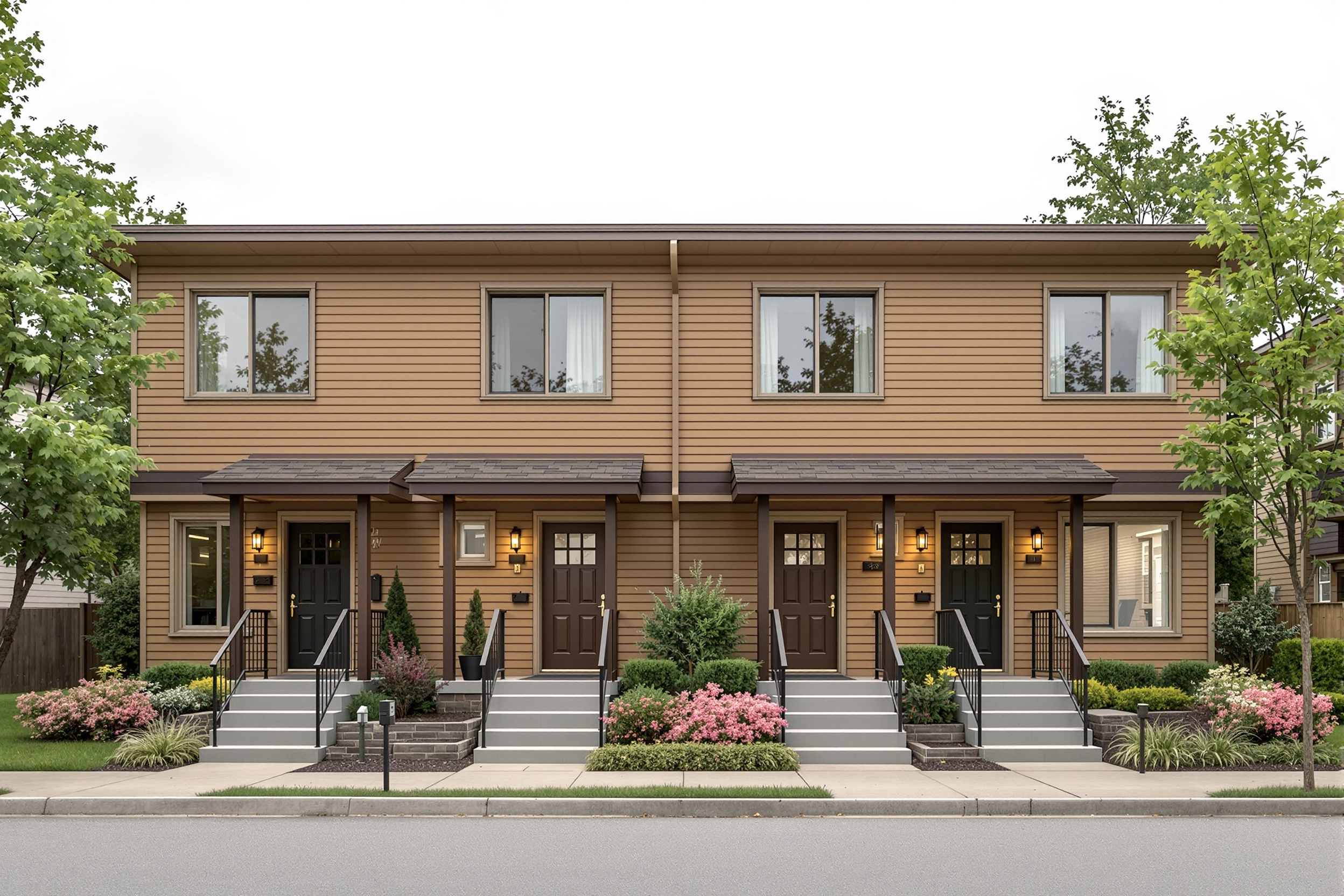Net Operating Income (NOI) shows what your rental really earns after day-to-day costs. It’s simply rental income minus operating expenses, not including mortgage payments or income taxes. Use it to set rent, compare deals, and judge performance fast.
In this guide, you’ll get the exact formula, what to include and exclude, a quick worksheet with examples, and how to use NOI for cap rate and debt coverage checks. You’ll also see common mistakes to avoid and a simple way to improve NOI without hurting tenant experience.
What is Net Operating Income in Rental Properties?
Net Operating Income (NOI) is the money your rental earns after everyday expenses. It starts with Effective Gross Income (rent plus fees minus vacancy and credit loss), then subtracts operating expenses.
Formula:
NOI = (Scheduled Rent + Other Income − Vacancy/Credit Loss) − Operating Expenses
How to Calculate Net Operating Income for Rental Properties?
NOI is your rental’s earnings after normal running costs. Here’s the simple step-by-step process to calculate it:
Step 1: Calculate Gross Rental Income
This is the total income from the property. Include:
- Rent collected from all units.
- Other income sources like laundry facilities, parking fees, and vending machines.
Step 2: Calculate Total Operating Expenses
These are the costs associated with running the property. This includes:
- Property taxes and insurance premiums
- Property management fees and leasing commissions
- Owner-paid utilities like water, sewer, gas, electric, trash, internet for common areas
- Repairs and routine maintenance including turnover costs such as paint, cleaning, rekeying, and service contracts for HVAC, fire systems, and elevators
- Grounds and common-area care landscaping, snow removal, pool, janitorial
- HOA or condo dues and common charges
- Pest control and security
- Administrative and professional bookkeeping, accounting, ordinary legal, bank and merchant fees, office supplies, software
- Licenses and inspections required by local rules
- Payroll for on-site staff wages, payroll taxes, benefits
Do NOT include:
- Mortgage payments (principal and interest)
- Depreciation
- Capital expenditures (CapEx) like a new roof or HVAC system
- Income taxes
Step 3: Subtract Operating Expenses from Gross Rental Income
Once you have both figures, subtract the total operating expenses from the gross rental income to get the NOI.
Example Calculation
A duplex has an annual gross rental income of $36,000. The annual operating expenses are:
- Property Management: $3,600
- Property Taxes: $2,500
- Insurance: $1,200
- Repairs and Maintenance: $1,500
- Utilities: $1,800
- Total Operating Expenses: $10,600
NOI=$36,000−$10,600=$25,400
The Net Operating Income for this property is $25,400. This is the amount available to cover the mortgage and provide a profit for the owner.
Net Operating Income (NOI) Calculator
Net Operating Income vs. Cash Flow
While both metrics measure profitability, they serve different purposes and include different items in their calculations.
- Net Operating Income (NOI): This is a measure of a property's profitability before financing. It tells you how much money the property itself generates from its operations. Investors use NOI to compare the performance of different properties on an "apples-to-apples" basis, as it's not influenced by the owner's specific financing choices.
- Cash Flow: This is the actual cash an investor pockets. It’s the money left after all expenses, including the mortgage, have been paid. Cash flow is what determines if a property is putting money in your pocket each month or costing you money to own.
NOI vs. Cash Flow: Key Differences
Why is NOI Important in Rental Property Investing?
Net Operating Income (NOI) is a fundamental metric for rental property investors, as it provides a clear picture of a property's profitability. It's the standard for evaluating and comparing different investment opportunities. Here's a breakdown of why NOI is so important:
1. Property Valuation
NOI is the foundation of the income-capitalization approach to property valuation. This method is a standard in commercial real estate and is also used for residential rentals.
By dividing the NOI by the market's capitalization rate (cap rate), you can estimate a property's value.
A higher NOI, all else being equal, directly leads to a higher property value.
2. Investment Comparison
Because NOI excludes financing costs (like mortgage payments), it allows investors to compare the operational performance of properties on a level playing field. It doesn't matter if one property is purchased with a large loan and another is bought with cash; the NOI shows which property is more efficient at generating income from its operations.
3. Securing Financing
Lenders use NOI to determine a property's ability to cover its debt obligations. They often calculate a metric called the Debt Service Coverage Ratio (DSCR).
A higher DSCR indicates that a property generates more than enough income to cover its mortgage payments, making it a less risky loan for the lender.
A strong NOI is often a prerequisite for getting a loan with favorable terms.
4. Performance Measurement
NOI provides a benchmark for tracking a property's performance over time. By regularly calculating and analyzing NOI, an investor can identify trends, pinpoint areas for improvement (e.g., rising expenses or declining income), and make strategic decisions to maximize profitability.
What is a “Good” NOI Margin for Small Multifamily Properties?
A "good" NOI margin can vary significantly based on factors like property type, age, and location. However, for small multifamily properties, a common benchmark is an operating expense ratio between 35% and 50%.
- Excellent: An expense ratio below 35% is considered excellent and indicates highly efficient management.
- Good: An expense ratio in the 35% to 45% range is generally considered healthy.
- Needs Improvement: An expense ratio above 50% often suggests that expenses are too high or rents are too low compared to the market.
Important Note: New or recently renovated properties tend to have lower expense ratios due to fewer maintenance needs, while older properties or those in high-cost areas might have higher ratios. Always compare a property's NOI margin to similar properties in the same market to get a true sense of its performance.
Secure Your Rental Property's Profitability
Calculating your net operating income is the first step, but protecting it is crucial. Unexpected repairs and liabilities can quickly erase your hard-earned profits. Safeguard your investment with the right landlord insurance coverage. Obie makes it easy to get tailored protection for your rental properties.
Whether you need a policy for a single-family rental home, a multifamily building, or are looking for custom solutions for property managers, you can get a free, instant quote today.
FAQs about How to Calculate Net Operating Income for Rental Properties
Can Net Operating Income ever be negative?
Yes. If a property's operating expenses are higher than its gross income, the NOI will be negative. This is a major red flag, often caused by high vacancy or unexpected costs, showing the property is losing money from its core operations.
If I self-manage my rental, should I still include a management fee in my NOI calculation?
Absolutely. To accurately measure your property's performance, you should include a market-rate management fee (typically 8-10% of gross income) as an operating expense. This accounts for the value of your labor and allows for a fair comparison with other properties.
How often should I calculate my property's NOI?
You should calculate NOI on both a monthly and annual basis. Monthly checks help you spot immediate trends and manage cash flow. The annual NOI is essential for tax reporting, performance reviews, and comparing your investment against market benchmarks.
Does raising the rent automatically increase NOI?
Not always. While higher rent boosts potential income, if it's priced above the market it can increase your vacancy rate. The income lost from an empty unit can easily wipe out the gains from a rent hike, sometimes even lowering your overall NOI.







